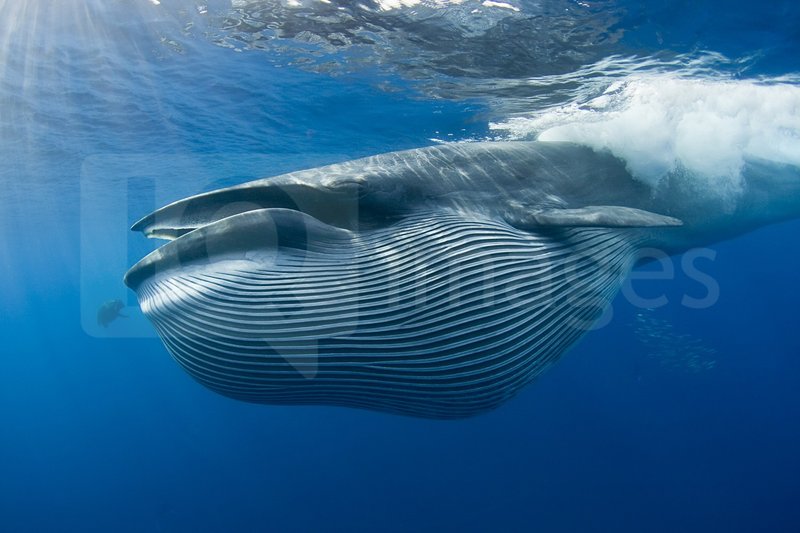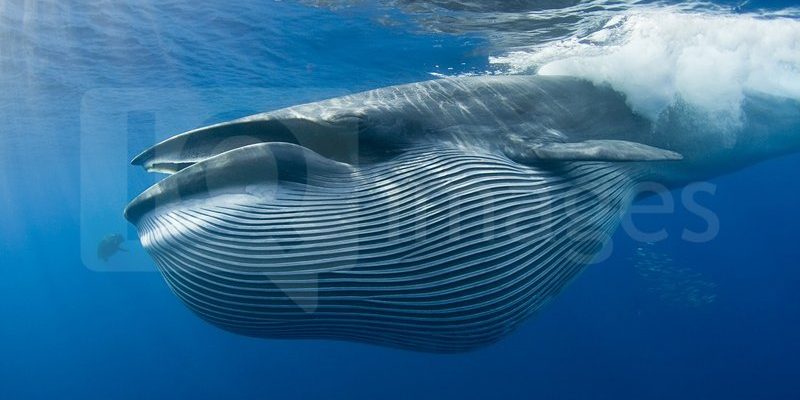
Bryde’s whale might not be the most famous whale around, but it certainly deserves a spotlight. Imagine a creature that glides gracefully through the ocean, its sleek body cutting through the waves with an ease that takes your breath away. Known for its curiosity and adaptability, Bryde’s whale has captivated marine biologists and nature enthusiasts alike. With its unique features and fascinating habits, there’s a lot to discover about this magnificent mammal.
Have you ever considered how marine life communicates, hunts, or even migrates? Bryde’s whale has a few tricks up its sleeve that make it stand out. With its distinctive three ridges along the head and a body that can reach impressive lengths, this whale showcases the beauty of evolution in action. Let’s dive deeper and explore the world of Bryde’s whale, from its habitat to its diet and much more!
Physical Characteristics of Bryde’s Whale
Bryde’s whale is one of the smaller baleen whales, typically measuring between 40 to 55 feet in length. The females are generally larger than males, which is common in the whale world. Its body is slender and streamlined, allowing it to swim efficiently through the water. The skin color can range from dark blue to gray, often appearing lighter on the belly. This coloration not only helps with camouflage against predators but also aids in thermoregulation.
One of the most distinctive features of the Bryde’s whale is its three longitudinal ridges on the top of its head. These are not just for show; they play a functional role in the whale’s hydrodynamics. When swimming, these ridges reduce drag and turbulence, making movement smoother. You might find it interesting that Bryde’s whales are often misidentified as other species, especially fin whales, due to their similar size and shape.
Another key aspect of their anatomy is the baleen plates. Instead of teeth, Bryde’s whale has over 200 baleen plates hanging from its upper jaw. These plates are made of keratin, the same material as human nails and hair. When feeding, Bryde’s whale takes in a gulp of water rich in small fish and plankton, then uses its tongue to push the water out, trapping its food in the baleen. This method of feeding is called filter-feeding, and it’s a crucial aspect of how these whales survive.
Habitat and Distribution
Bryde’s whale is found in warm, temperate waters around the globe. They favor coastal areas and deep, offshore waters, often found near continental shelves. You might be surprised to learn that they are not migratory like many other whales. Instead, they tend to stay in the same regions year-round, which can vary depending on food availability. This adaptability allows them to thrive in different environments, from the tropical waters of the Caribbean to cooler temperate zones.
Their preferred habitats include places rich in fish and krill. You’ll often find Bryde’s whales feeding near the surface, especially in nutrient-dense waters where upwellings occur. These upwellings are natural phenomena where deeper, colder water rises to the surface, bringing nutrients with it. As a result, you’ll spot these whales in areas where there’s a rich biodiversity, which provides plenty of food for them.
Interestingly, Bryde’s whales are often sighted alone or in small groups, unlike other whale species that travel in large pods. This social behavior might be influenced by their feeding habits since they can efficiently hunt for food without the need for cooperative strategies. So, if you find yourself in a coastal area known for its marine life, keep your eyes peeled; you might catch a glimpse of these magnificent creatures!
Diet and Feeding Behavior
The diet of a Bryde’s whale primarily consists of small fish, squid, and plankton. Their feeding habits are quite fascinating. Unlike some larger whales that can consume vast quantities of water in a single gulp, Bryde’s whales tend to be more selective. They often employ a method called lunge feeding, where they accelerate towards a school of fish with their mouths wide open, gulping in large amounts of water and prey simultaneously.
After consuming their meal, they use their baleen plates to filter out the water, retaining the fish or plankton within. This form of feeding is highly effective, especially in productive waters, allowing Bryde’s whales to meet their nutritional needs without excessive energy expenditure. They can consume up to 2,000 pounds of food per day, which is quite a hefty amount for an animal of their size!
What’s intriguing is the feeding time of Bryde’s whales. They are known to feed primarily in the daytime, often seen breaching the surface or blowing air out in visible spouts. This behavior can create a spectacular scene for those lucky enough to witness it. You might think of it as a fitting display of nature’s balance, where these majestic creatures play a crucial role in maintaining the ecosystem of the oceans.
Behavior and Social Structure
Bryde’s whales are generally solitary creatures but can sometimes be seen in small groups of 2 to 4 individuals. This is especially true in regions where food is abundant. They are known to exhibit curious behavior, often approaching boats and surfacing alongside them. This friendliness can make observing them a memorable experience for marine enthusiasts.
Unlike some other whale species that display complex social structures, Bryde’s whales tend to be more relaxed and less social. Their calm demeanor can sometimes lead to them being overlooked in favor of more boisterous species like orcas or humpbacks. However, their unique behaviors, such as breaching and slapping the surface of the water, are captivating to witness.
Communication is another interesting aspect of Bryde’s whale behavior. They produce low-frequency sounds to communicate with each other, which can travel long distances underwater. These vocalizations play a vital role in their social interactions, especially since they often inhabit areas with other marine mammal species. In essence, while Bryde’s whales may appear solitary, they have a rich inner life full of communication and interaction.
Conservation Status
As with many marine species, Bryde’s whales face various conservation challenges. Their populations are affected by human activities such as shipping, fishing, and habitat degradation. While there’s no precise count of Bryde’s whales globally, certain populations are considered vulnerable due to these threats. They are particularly sensitive to environmental changes, which can impact their food sources and habitats.
In regions where Bryde’s whales are frequently seen, conservation efforts are paramount. This includes establishing marine protected areas, regulating shipping lanes, and implementing sustainable fishing practices. Organizations around the world are working tirelessly to monitor Bryde’s whale populations and ensure their habitats remain safe from degradation.
Awareness is also a powerful tool in conservation. By educating the public about Bryde’s whales and their role in the ecosystem, we can help protect these magnificent creatures for future generations. If you’re passionate about marine life, consider supporting marine conservation organizations or participating in local efforts to protect ocean habitats.
Interesting Facts about Bryde’s Whale
| Fact | Detail |
| Length | 40 to 55 feet |
| Weight | Up to 30 tons |
| Diet | Small fish, squid, and plankton |
| Lifespan | Up to 70 years |
| Habitat | Warm, temperate waters worldwide |
| Social Structure | Solitary or small groups |
| Unique Feature | Three ridges on the head |
FAQ
What is the average lifespan of a Bryde’s whale?
The average lifespan of a Bryde’s whale is estimated to be around 70 years, although some individuals may live longer. Factors such as environmental conditions, food availability, and human interactions can all influence their lifespan. Like many marine mammals, their longevity is a testament to their adaptability and resilience in the face of changing oceanic landscapes.
Are Bryde’s whales endangered?
Currently, Bryde’s whales are classified as “vulnerable” by the International Union for Conservation of Nature (IUCN). While they are not critically endangered, certain populations face significant threats from human activities such as shipping, fishing, and habitat degradation. Conservation efforts are crucial in protecting their habitats and ensuring that they thrive in the wild.
How do Bryde’s whales communicate?
Bryde’s whales communicate through a series of low-frequency sounds, which can travel long distances underwater. These vocalizations are essential for social interaction among individuals. Their communication plays a vital role in maintaining social bonds and coordinating feeding activities. Scientists continue to study these sounds to better understand their complex behaviors.
What do Bryde’s whales eat?
The diet of Bryde’s whales primarily consists of small fish, squid, and plankton. They are filter feeders, using their baleen plates to trap food while expelling water. This feeding method is efficient and allows them to consume large quantities of food to meet their nutritional needs. On average, they can eat up to 2,000 pounds of food daily!
Where are Bryde’s whales commonly found?
Bryde’s whales inhabit warm and temperate waters worldwide, often found near coastal areas and in deep offshore waters. They prefer regions rich in food sources, such as places where upwellings occur. Unlike some other whale species, Bryde’s whales are not migratory and tend to remain in the same areas year-round, adapting to food availability.
How fast can Bryde’s whales swim?
Bryde’s whales can swim at speeds of up to 12 miles per hour (about 19 kilometers per hour) when they need to. However, they typically move at a more leisurely pace while feeding. Their streamlined body shape helps them glide efficiently through the water, giving them an advantage when swimming and hunting for food.
Do Bryde’s whales have any natural predators?
The primary natural predators of Bryde’s whales are orcas, which may target young or sick individuals. Adult Bryde’s whales are generally too large for most predators, but they face considerable threats from human activities, including ship strikes and entanglement in fishing gear. Conservation measures are essential to mitigate these risks and protect their populations.
Can you see Bryde’s whales on a whale-watching tour?
Absolutely! Bryde’s whales are frequently spotted on whale-watching tours, especially in areas where they are known to feed. These tours provide a fantastic opportunity to learn about marine life and observe these magnificent creatures in their natural habitat. Just remember to choose eco-friendly tours that prioritize conservation and minimize disturbances to marine life.
What is the breeding behavior of Bryde’s whales?
Bryde’s whales have a calving interval of about 2 to 3 years, typically giving birth to a single calf. This occurs after a gestation period of approximately 11 months. Calves are born measuring around 13 feet in length and weigh about 2 tons. Mothers are known to be protective, nurturing their young until they are capable of foraging independently.
What role do Bryde’s whales play in the ecosystem?
Bryde’s whales play a vital role in marine ecosystems as top predators. By feeding on small fish and plankton, they help maintain the balance of species populations and contribute to the overall health of the ocean. Their feeding behavior also influences the distribution of nutrients in the water, supporting the growth of phytoplankton, which is essential for a healthy marine environment.
Are there different species of Bryde’s whales?
Yes, there are three recognized subspecies of Bryde’s whale: the Bryde’s whale (Balaenoptera edeni), the pygmy Bryde’s whale (Balaenoptera acutorostrata), and the sei whale (Balaenoptera borealis). Each subspecies varies slightly in size, distribution, and feeding behavior. However, they all share similar characteristics and ecological roles within their respective habitats.
What can I do to help protect Bryde’s whales?
You can actively help protect Bryde’s whales and their habitats by supporting marine conservation organizations, advocating for sustainable fishing practices, and reducing ocean pollution. Additionally, participating in local beach clean-ups or educational programs can have a lasting impact on marine ecosystems. Every little bit counts when it comes to preserving these majestic creatures for future generations!

